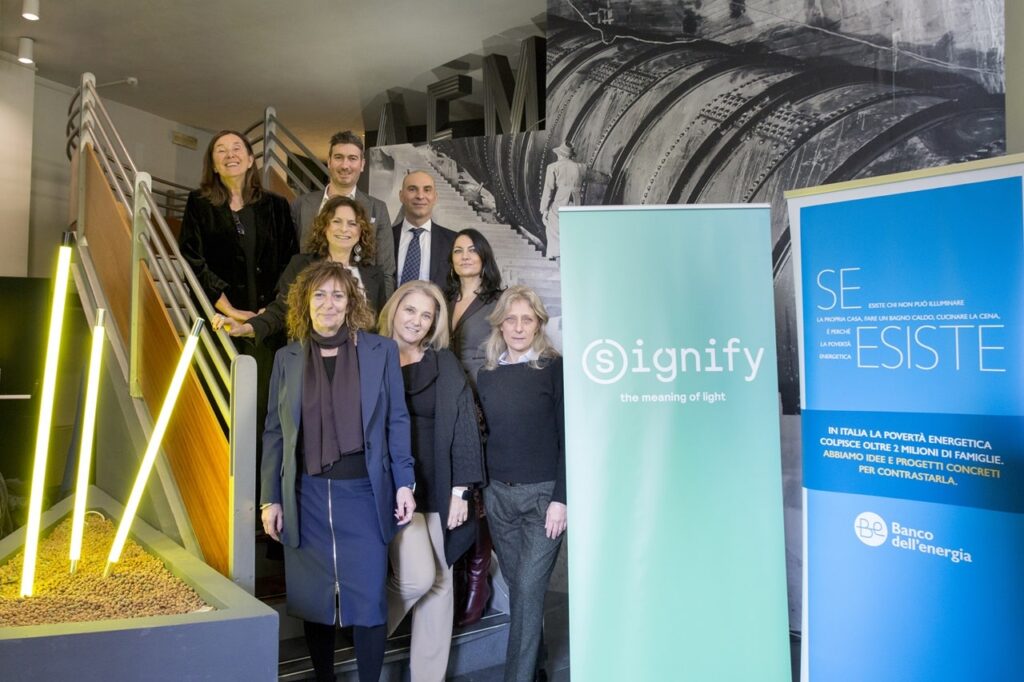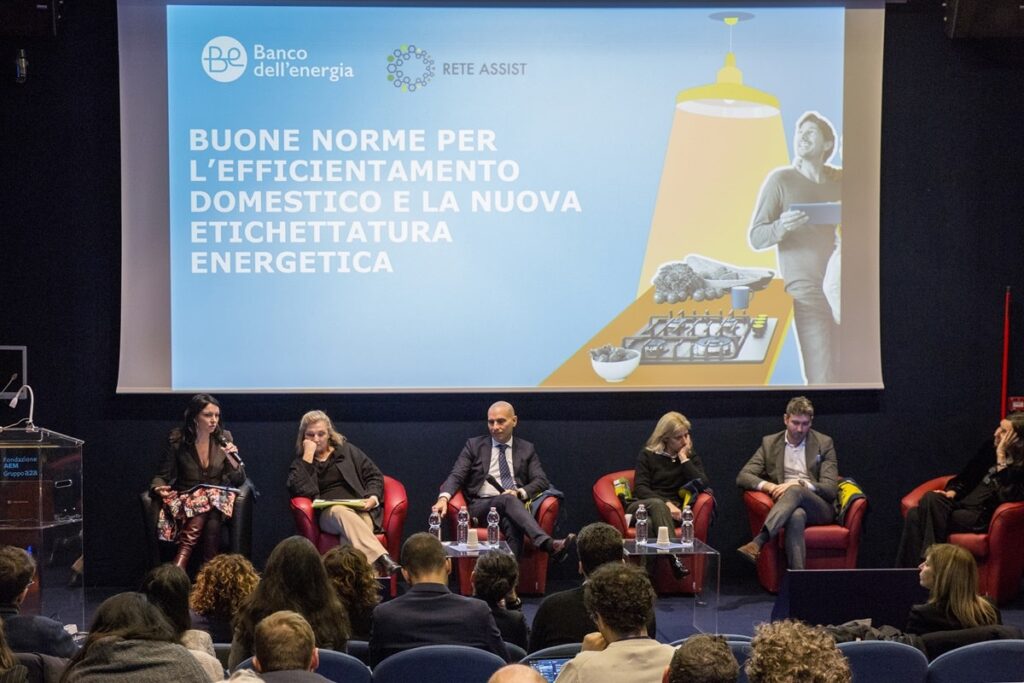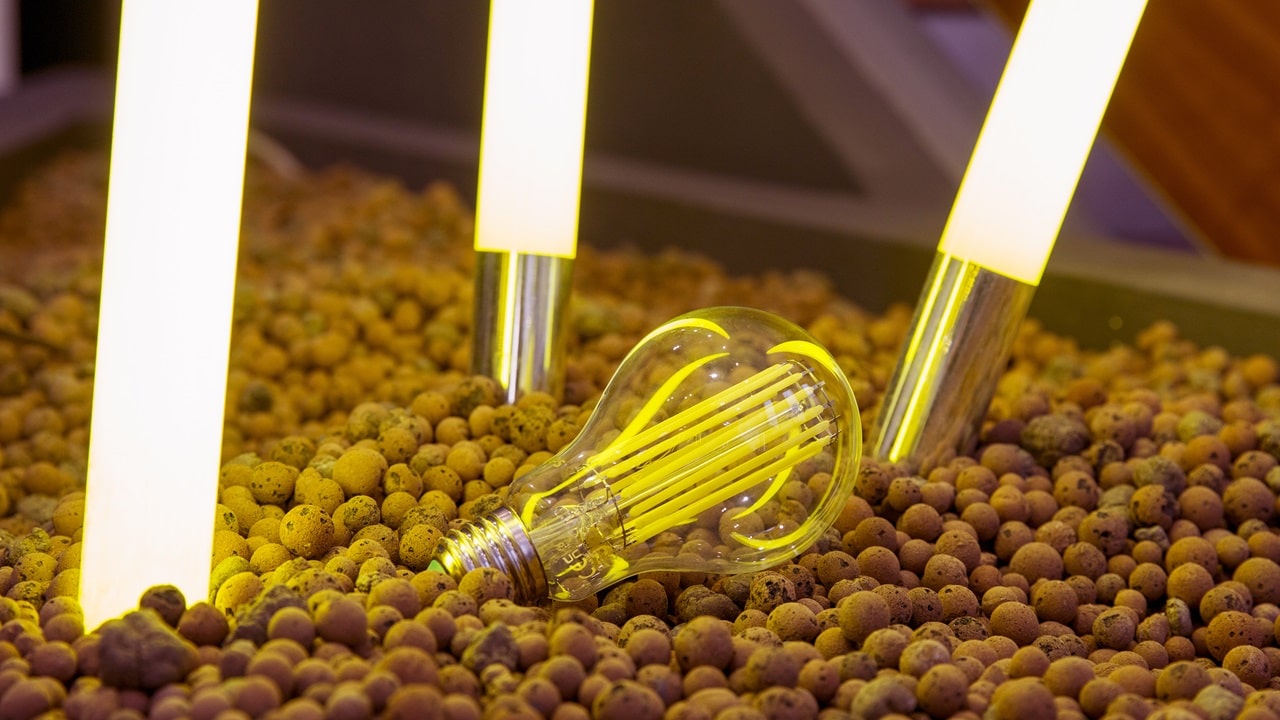Can the right light bulb make a difference in your bill — and for the environment? The simple answer is: Yes, this simple and inexpensive gesture allows you to slightly reduce consumption and emissions. And added to other measures to lower energy expenditure, it can make a difference. Signifythe branded lighting solutions company Philipswith Energy Bank, they explained to us how to choose the right light bulb (for example the Philips LED in Classe A) allows you to save a lot of energy compared to traditional light bulbs, but also to less efficient LED ones (up to 90%).
Seemingly small choices like light bulbs can help fight “energy poverty”, a problem recently exacerbated by rising prices. But how to choose the right light bulb for each room, that does it save energy without giving up lighting?
How to choose the right light bulb (and save energy)?
What do you do if you have to choose a light bulb for the bedside lamp or the chandelier at home? If you’re reading this article, you’re probably familiar with the topic enough to carry with you the broken light bulb you need to change. Perhaps you know that LED lamps, compared to traditional ones, consume much less. And the more experienced probably know the difference between a warm and a cold light.
To answer a seemingly trivial question, Signify e Energy bank they organized at the AEM Foundation in Milan an event with five different experts. Because Signify’s research work on new light bulbs Philips LED Classe A wants to reduce energy waste and CO2 emissions one light bulb at a time. A light bulb that does more than just that consumes up to 60% cheaper than standard bulbs from Philips, but it delivers 50 thousand hours more: you will have to change it in fifty years.
As he explains Monica CeppiCommercial Leader of Signify Italy, Israel and Greece, “a simple gesture like changing a light bulb can help fight the phenomenon of energy poverty“.
What is energy poverty — and how can we tackle it?
The energy poverty represents a complex and multifactorial challenge. It does not always coincide with “general poverty”: there are families who, despite having average incomes, experience situations of hardship due to inefficient homes and appliances (and light bulbs) that are too energy intensive. Marina Varvesi, President of Rete Assistexplains to us that the energy poverty it occurs when a family cannot satisfy its primary energy needs.
 The speakers of the Signify and Banco dell’Energia event
The speakers of the Signify and Banco dell’Energia event
This condition, while complex and multifaceted, can be temporary, and people can overcome it. However, in recent years, many families have slipped into this difficult situation, facing multiple problems such as high energy costs, inefficiency of homes and appliances, as well as inefficient lighting.
Energy poverty leads to several problems for those who experience it. On the one hand, the social stigmatization: those who are unable to heat their home or use appliances end up isolating themselves, without inviting anyone into their home. Furthermore, there are health problems arising, for example, from differences in thermal conditions of the various rooms.
In addition to poverty, poverty is growing in our country energy vulnerability. Broader concept, involves people who do not fully understand the energy market, increasing the risk of falling into it energy poverty following price increases.
How to save energy: education makes the difference
Once you understand how necessary it is, especially for some families, to save energy, you need to understand how to do it. Antonio Castaldi, Home energy tutor at Energy bankplays a vital role in educating people about energy saving. And in addition to education, it can also provide products that consume less. For example, through the support of Signifycan provide free to those in need high efficiency light bulbs.
One of the essential points to convey, he explains, is the importance of energy labelspresent on household appliances since 1998. They are an essential tool to achieve the objectives of theAgenda 2030. In addition to allowing consumption to be monitored, these labels stimulate companies to innovate and reduce costs.
Castaldi explained to us the value of the new labels, approved by the European Union. They mark a much higher energy standard: think about the old ones A+++ have become the current ones D. This makes us understand how the new one Class A bulb from Philips demonstrates a high level of efficiency.
In addition to improving theenergy efficiency of household appliances, Castaldi explains that interventions on homes often also become necessary. Double glazing, reflective panels behind the radiators and insulation of the roller shutter box they can make a difference. But the ways to save money are many and they add up. Reduce it device standby, such as unplugging smartphone chargers when not in use, can lead to annual savings of up to 20 euros. And the same goes for light bulbs.
How to choose the right LED bulb: Watt, Lumen, Kelvin and more
When it comes to lighting our home space, understanding how to choose the right light bulb is crucial to creating a welcoming and comfortable environment. Word of Paola BertolettiArchitect Lighting Designer and Associate Professor at the Polytechnic of Milan, who helps us understand how to do it.
Pay attention to Lumens and Kelvins
Usually, our choice of a bulb is based on factors such as socket and watts. However, for a more informed selection, we need to shift our focus to lumen (lm). While watts measure how much energy a light bulb uses, lumens indicate the quantity of light actually emitted. This is particularly relevant in LEDs, where lower wattage consumption can correspond to higher luminous flux.

For example, the light bulb from 7.3 W from Philips in Class A it emits the same lumens (actually just more, 1535 lm versus 1521 lm) compared to a classic 100W bulb. And, thanks to a lumen to watt ratio of 210, it does so while consuming 60% less.
Another consideration to make is that of color temperaturemeasured in Kelvin (K), affects the atmosphere of the room. Warmer lights (around 2700K) are ideal for bedrooms and living rooms, while in the kitchen or bathroom it is advisable to opt for a cooler heat temperature (around 4000K). This choice helps to create lighting suitable for the different activities carried out in each environment.
Lighting designed for the room
Once you have determined the attack, lumen and color temperature, you need to understand how to illuminate the room. The beam openings indicate the direction in which the light radiates. There are directional lights with 25 or 35 degree openings and 360 degree omnidirectional lights. The choice depends on the desired effect and the intended use of the lighting.
It is also important to evaluate thecolor rendering index (ICR o CRI), which measures the ability of a light source to faithfully reproduce surrounding colors. A value above 80 is recommended to ensure colors appear true and vivid (100 CRI is direct sunlight, the maximum). Going below this level will make it difficult to distinguish blue socks from black ones.
Finally, to ensure appropriate lighting, we must consider the ratio lumens per square meter based on the size of the room, the color of the walls and the activities carried out. For example, in the kitchen, we might aim to approximately 160 lm/m2, with a 20% increase if the environment is particularly dark. The presence of the logo “Eye Comfort” on the packaging can be an indicator of a light that promotes visual well-being.
Does choosing the right light bulb really save money?
Lighting can play a vital role in making buildings more efficient and sustainable. Nazarene AvenueMarketing & Communication Manager of ASSIL (National Association of Lighting Manufacturers), tells us the results of a study commissioned in this regard by the Polytechnic of Milan.
The study evaluated ten different areas across three levels of implementation: LED only, LED with simple automation, LED with advanced automation. In the condominiums, with 80 light points, a energy saving of 60%, equivalent to a reduction of 511.2 kg of CO2 per yearor. This is comparable to taking half a car off the road or planting 16 and a half trees. By adding a little automation, the savings rise to 78%, equal to approximately 664 kg of CO2 less per year.

These are perhaps not numbers that will make your head spin: but they add up. According to the European Union, buildings currently they consume 40% of the energy and emit 36% of the emissions. Saving money with LED bulbs — especially if they are as efficient as those from Signify — can make the difference.
A more efficient future
There are solutions that will hopefully allow us to reduce consumption even further. And there are many young minds working to find them, like the students you told us about Stefana Broadbent, of the design department of the Polytechnic. His work group tried to live for a month consuming 50% less: just 4kWh. Strengthened by this experience, they have worked on solutions for heating and cooling environments (such as Breasewith terracotta pots hanging from buildings to insulate them thermally) and…















Leave a Reply
View Comments